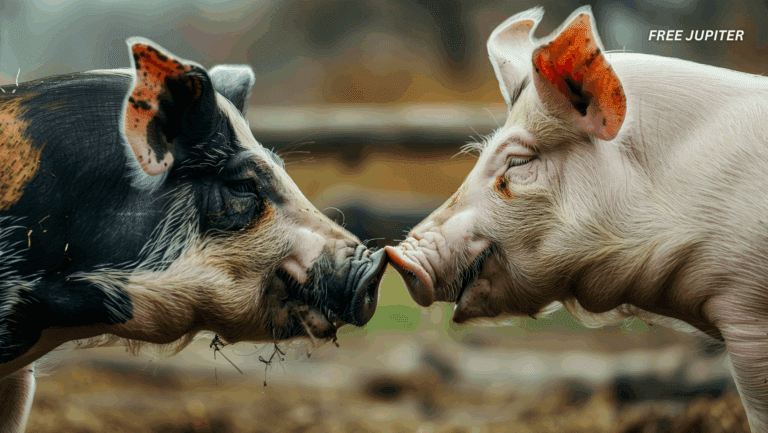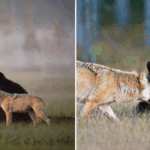In the realm of science, major breakthroughs are usually credited to long hours in labs, advanced instruments, and meticulous research. But every now and then, the natural world tosses a curveball that’s too good to ignore. Enter Pepper—a seemingly ordinary housecat from Florida who, through his hunting habits, has helped scientists uncover not just one, but two previously unknown viruses. And no, he’s not wearing a lab coat. Just fur.
This feline’s curious gift-giving behavior has unintentionally turned him into one of the most unexpected contributors to modern virology. Let’s dig into how this story of backyard science unfolded—and what it might mean for future disease detection.
The Cat Who Brought Science to the Doorstep
Pepper is your average outdoor-loving cat with a habit many pet owners will recognize: leaving “gifts” on the porch. Except instead of hair ties or feathers, Pepper prefers small, lifeless animals—nature’s leftovers, if you will. While most owners would be understandably unsettled, Dr. John Lednicky, a virologist at the University of Florida, saw potential.
“This was an opportunistic study,” Lednicky remarked. “If you come across a dead animal, why not test it instead of just burying it? There’s a lot of information that can be gained.”
This practical and slightly morbid approach turned out to be a goldmine for virus research.
First Find: A Shrew with a Viral Secret
One of Pepper’s offerings was an Everglades short-tailed shrew (Blarina peninsulae), a rarely studied mammal native to Florida’s swampy underbrush. When Lednicky’s team analyzed samples from the animal, they discovered something unexpected: a new type of mammalian orthoreovirus.
Orthoreoviruses, for the uninitiated, are viruses that were once thought to be harmless. Scientists used to refer to them as “orphan viruses” because they seemed to exist in mammals—including humans—without causing any notable diseases. But that assumption has recently been challenged.
According to virologist Emily DeRuyter, orthoreoviruses have now been linked, albeit rarely, to conditions like gastroenteritis (aka stomach flu), respiratory infections, and even meningitis in children. That said, she emphasized there’s no current cause for alarm about this newly discovered strain.
“There are many different mammalian orthoreoviruses, and not enough is known about this one to be concerned,” DeRuyter explained.
Still, the genome of the virus was sequenced and published, adding to the collective scientific understanding of this under-researched group.
Read more: The Reason Why Some Cats Purr More Than Others Has Finally Been Decoded
Second Discovery: The Jeilongvirus Hitching a Ride on a Mouse
Pepper wasn’t done playing scientist’s assistant. In an earlier episode in 2024, he had gifted Lednicky a mouse. Upon testing it, researchers discovered a previously unidentified jeilongvirus—a member of the paramyxovirus family, which includes viruses responsible for conditions like measles, mumps, and respiratory infections in humans and animals.
This particular strain, dubbed Gainesville rodent jeilongvirus 1, had never been found in the U.S. before. And what made it even more alarming was that it could infect primate cells in lab conditions. In plain terms: it’s capable of crossing species boundaries.
That kind of behavior rings alarm bells because it hints at the potential for zoonotic spillover—the process by which a virus jumps from animals to humans. This is how pandemics begin. SARS-CoV-2, the virus behind COVID-19, is one such example.
The researchers wrote in their 2024 report:
“The early detection of endemic viruses circulating within hosts in North-Central Florida can significantly enhance surveillance efforts, thereby bolstering our ability to monitor and respond to potential outbreaks effectively.”
Translation? Finding viruses early in animals can help prevent or prepare for outbreaks in humans.
The Unseen Risks of Outdoor Cats
While Pepper’s knack for viral discovery has been helpful for science, it also draws attention to a larger, thornier issue: the risks associated with letting domestic cats roam freely outdoors.
Cats are natural predators. In the U.S. alone, outdoor cats are estimated to kill billions of birds and small mammals each year. This has sparked debates among conservationists, veterinarians, and pet owners about whether cats should be kept indoors for their safety—and for the environment’s.
But it’s not just an ecological concern. From a public health perspective, a free-roaming cat can act like a furry little disease taxi. When they interact with wildlife, they can come into contact with a wide range of viruses. And when they bring home prey, they’re also potentially bringing viruses closer to humans.
In fact, scientists have warned that domestic cats could serve as a bridge for avian influenza (bird flu) to make its way to humans. In countries like Poland and South Korea, there have been documented cases of cats contracting and spreading bird flu. And in the wake of pandemics, the idea of another zoonotic event is not just theoretical—it’s a real, ongoing concern.
When Nature Meets Backyard Science
Pepper’s story is amusing, slightly grotesque, and unexpectedly inspiring. It also serves as a unique case study in citizen science meets domestic behavior. Although Dr. Lednicky had professional tools and knowledge to interpret what Pepper dragged in, the initial action—finding and presenting a small animal—was all feline instinct.
Interestingly, this isn’t the only time animals have helped science in strange ways:
- Dolphins have been trained to locate underwater mines but ended up helping researchers study deep-sea environments.
- Dogs have sniffed out cancer and bacteria, leading to new fields of biomedical research.
- Crows have been observed using tools, which has influenced our understanding of intelligence in non-human species.
Even untrained pets can sometimes be surprisingly helpful in scientific discovery, especially when their instincts lead them into places humans rarely go—deep into underbrush, high into trees, or underground.
Read more: Cats Might Be the Closest Thing to a ‘Perfect’ Creature, According to Science
From Cat to Catalyst
Pepper may not be aware of his contributions to science. He’s probably just proud of his hunting skills and the approving nods from his human. But what he’s actually doing is sparking a deeper look into how pathogens evolve and spread quietly in local ecosystems.
His actions remind us that discovery doesn’t always happen in sterile labs with advanced technology. Sometimes, it comes with fur, whiskers, and a mouse in its mouth.
For virologists like Lednicky, these everyday interactions between pets and wildlife offer a unique chance to spot viral threats early—and maybe even prevent the next big outbreak.
So, the next time your cat drops a strange gift at your feet, you might want to take a closer look. It could be just a dead rodent… or it might be the key to unlocking the secrets of an undiscovered virus.










